|
Programme
Competition programme AUTHOR(WRIT)Y:
video art, TV art, experimental film
180 works have been submitted for the 2006 competition –
from USA, France, Montenegro, UK, Germany, the Netherlands,
Canada, India, the Czech Republic, Russia, Ukraine, Belarus,
Japan, China, Azerbaijan, Australia, etc.
In these works the AUTHOR(WRIT)Y theme is prominent as both
the impersonal discourse of power in contemporary society
and social activism discourse using media as its means. Can
a media artist oppose the media absolute authoritarianism?
Is he turned into its instrument? What chances are there for
authorship rhetoric in the impersonalized discourse?
Competition programme >>>
Presentation programme
(retro screenings, special film and video screenings)
Vito Acconci’s films. Vito Acconci, an American video
art pioneer has through all his work researched the author
rhetoric theme by means of media (author’s collection,
«Electronic Art Intermix», New York). Author(writ)y
programme from the Centre Georges Pompidou collection.
France. Montevideo, the Netherlands. Videotage, Hong Kong.
Anthology, New York. MediaArtLab, Moscow. Vasulkas archives,
Santa Fe, USA. Art House In Shorts short films programme.
Something About Power Russian video art programme from the
State Centre for Contemporary Art. Freedom Territory British
video art programme. In Memory of Aleksei Isaev programme
etc.
|
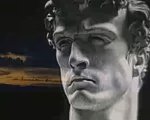
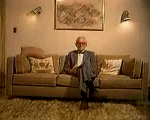
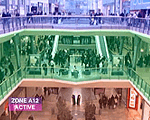 |
AUTHOR(WRIT)Y
Curated by: Konstantin Bokhorov - curator,
contemporary art critic, Moscow. Cooperates with
MediaArtLab on different projects since 2000.
Author(writ)y video programme from the Centre
Georges Pompidou collection. France. Montevideo, the
Netherlands. Videotage, Hong Kong. Anthology, New
York. MediaArtLab, Moscow. Vasulkas archives, Santa
Fe, USA.
The authorities’ impersonal discourse realized
through media and media use by contemporary artists
in their author rhetoric are the virtual problems of
avant-garde, later developed in video art. The
programme is based on MediaArtLab collection and
presents turning points of this development during
the last 30 years. These points can be called median
against media. The programme includes:
• Anthology of American video art classics by
Richard Serra, Bill Viola, Woody Vasulka which
visualize the context semantics of TV culture;
• Contemporary works representing the media
intrusion of power discourse as biopolitical
problem, for instance, Chris Oakley’s work, baring
the realities of contemporary global media
panopticon.
The programme aims not to popularize the theme but
to give the viewer an option of autonomous
retrospective analysis.
List of works
• Richard Serra, USA, Television Delivers
People. 1973, 5’00”
• Bill Viola, USA, Reverse Television or Portraits
of Viewers.1983-1984, 15’
• Antonio Muntandas, USA, Political Advertisment.
1984, 35’00’’ (excerpt)
• Woody Vasulka, USA, Art of memory. 1987, 36’00’’
(excerpt)
• Afa Chang, Hong Kong, «97 tons of memories», 1998,
14’20”
• Chris Oakley, UK, The Catalogue, 2004, 5’30’’
Running time 110 min. |
|
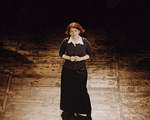
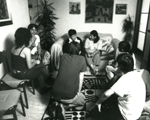 |
Art House In
Shorts. Main character’s view collection
Curated by: Tatiana Danilenko –
director, programme curator
Art house presupposes a special point of
view and position. It is close to lyric
poetry, where the author always makes
himself hear, even if he isn’t the narrator.
A film’s author sends his alter ego on a
world journey as a Main Character to live
trough different changes
declaring/demonstrating himself to the
world.
Main character’s view collection
«Totally», (èãðîâîé, 10 min., I. Beka)
Who am I? Whence do I come? Where am I
going?
«Maria Jesus» (feature, 2003, 12 min., M.
and G. de Serio)
The story of a woman form Peru who’s looking
for a job in Italy.
«U» (feature, 2001, 17 min., T. Daniliants)
One day from a young Moscow poet’s life.
Running time 40 min. |
|
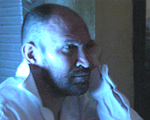
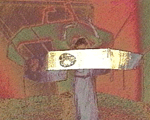
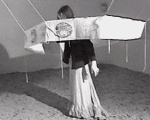
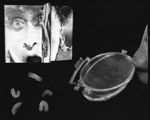
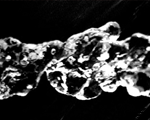 |
Aleksei
Isaev’s Virtual Attraction Fair
Curated by: Olga Shishko
My work is autobiographical by nature –
the autobiographical criterion being in the
clearly articulated art language non
dependent upon technique, situation etc. Any
event in my professional life, any utterance
is a reference to the main event (beyond
time and context) of the hypertext kind
(Aleksei Isaev).
A basic collection of all art projects by
Aleksei Isaev – the attraction assemblage.
It characterizes not only technology and the
outer presentation of art but also art’s
ideology and artist’s social strategies.
Every attraction is based on some principles
and has own ideology. Isaev plays upon
different aspects of interpreting the
attraction: revolution as attraction,
politics as correctly staged attraction.
These are different forms of art and
technology –these are all attractions.
Attraction calls for a certain technological
provocation. It has some technological
script, hidden in the form’s mechanics.
That’s why it’s called a new art form, which
forces and more significantly – provokes -
people to turn from audience into
participants.
The projects Labyrinthology, Underground
Land, Revolution, Assemblage of Attractions,
Trash Art, New Cannibals (1990-2000) show
the artist in his various possible functions
as author, ideologist and director. Each
project consists of a range of performances,
video works, exhibitions and ideological
manifestoes and texts. The author’s
individual aesthetic is demonstrated by use
of various technologies, such as drawing,
video, sound, text, computerized animation,
Internet, etc. For the artist each new
technology is a newly appropriated language.
The slight irony of all these projects and
their futuristic potential has attracted the
audience in both real (the Metro actions,
Labyrinthology) and virtual space (Trash
Art, Revolution in Circles).
In the Assemblage of Attractions project
Aleksei Isaev tried to restore Sergei
Eisenstein’s 3D vision, which could not be
converted into the cinematographic montage
at the beginning of the century.
In this project video version the main role
was played by new technologies, and it’s the
digital 3D modeling that helped create a new
screen model. In it the traditional linear
screen progressed by stages from monoscreen
to the new screen space in the shape of
Moebius strip, on which the endless stream
of video projection was running. In his
video Isaev uses various cinema montage
devices –from horizontal to vertical –so the
screen stops being plain and is becomes the
plastic substance of the image.
ALEKSEI ISAEV: PRO MEMORIA – TO REMEMBER
ME BY
Media art is the contemporary art’s
outpost. And the people who make it are
special. Something in their psychological
built makes them turn from the well-traveled
road to the wood of Unknown. They are
woodcutters in an obscure forest. Media art
is today the newest of art forms. And the
people who make it are desperate. They don’t
look for immediate dividends, they work for
later, for the future, with a sly joy
leaving their laurels to be sown by the
followers –it’s a mission of sorts. Aleksei
Isaev was one of such woodcutter
missionaries, a media artist and activist.
Despite his early departure he managed to
achieve surprisingly much in the field he
chose. By doing two extremely important
things – founding the MediaArtLab
Mediatheque and the MIFF Media Forum – he
actually managed a coup d'etat in the then
art context. He forced society to regard
media art as part of Russian art history and
audiovisual culture establishment.
Aleksei Isaev is an artist. Creating these
structures is an art gesture, the main
artifacts of his rash and vivid life. (Nina
Zaretskaya, TV Gallery Art Media Centre)
Aleksei Isaev, an artist, one of the
pioneers of Russian media art, founder and
director of the MediaArtLab Centre for Media
Art and Culture considered promotion and
establishment of contemporary progressive
culture values one of his main goals of his
work. His contribution to the Russian media
art scene development as artist, curator,
critic and publisher was extremely profound.
Unlike many Aleksei Isaev has from the start
seen media art and independent media culture
not as a fashionable trend but as a
phenomenon of significant cultural and
socio-political potential. He believed it
was important to support and develop
non-conformist experimental and critically
spirited forms of creativity. This has
defined his views till the very end.
Contemporary art has grown firm roots in
Russia. Works of Russian media artists are
now included into the historical cultural
heritage. The new generation mostly prefers
to analyze creatively the role of media
technologies in contemporary society. All of
this has been possible in many respects by
Isaev’s efforts. His untimely death is a
great tragedy for the Russian progressive
art community. (Tatiana Gorucheva, theorist,
new technologies art expert)
Aleksei Isaev
Founder on the MediaArtLab information
and research centre. Media artisr, theotrist,
curator, editor-in-chief of View form the
East. Media consciousness/Media technology
and Media Art in Russia series. Member of
Russian Federation Cinematographers Union
(new screen technologies committee). Russian
Internet Academy member. Pro&Contra 2000
international symposium author and curator.
MIFF Media Forum programme director since
2000.
Published a range of articles on media and
video art in Russia and abroad, participated
in various conferences, events and festivals
on video and media culture/
Videography
1992 Labyrinthology, video, Hi 8, 25
min.
1993 Topological Book Invariant, Betacam,12
min.(IBM 486: 3DS, AnimatorPro,Targa+)
Underground Land, Hi8, 7 min.(IBM 486:
3DS,AnimatorPro,Targa+)
1994 Videoscenario, Hi8, 7min. (IBM 486:
Animator Pro,Targa+)
Dance and Video, Hi8, 7min.(IBM 486:
AnimatorPro,Targa+) distribution "Coronado
film", France.
1995 New cannibals (Neyromancero), Hi8, 7
min, (Pentium 120, 3Ds4, Animator Pro, Adobe
Primer, MiroVideo) -distribution "Coronado
film", France.
1996 Assemblage of Attraction, (Sergei
Eisenstein Pavilion) Hi8 30min. Pentium 120,
3Ds4, Animator Pro, Adobe Primer, MiroVideo). |
|
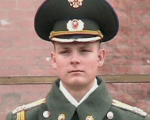
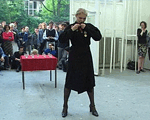
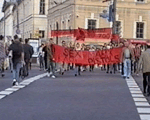
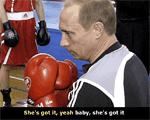 |
Something
About Power
Russian video art programme.
State Centre for Contemporary Art, 2006.
Curated by: Marina Koldobskaya, Maria
Korosteleva.
Marina Koldobskaya is an artist, critic,
journalist, curator of numerous art
projects. Since 2002 she works as a Director
of St. Petersburg branch of National Center
for Contemporary Art.
Maria Korosteleva – curator, contemporary
art critic.
Every artist has something to say about
power, especially in Russia. Power changes
hands, our attitude towards authority
changes from acute hate and aversion to
acute desire to be accepted and participate.
Apart from political power, there’s the
power of money, body, desire, ideas and
objects. The elder have power over the
younger, men over women, bosses over
subordinates and vice versa. And maybe all
around there’s God. Everyone is entangled in
the cobweb of relationships which are to
some extent relationships of power. That’s
how widely the theme is interpreted by
programme’s curators.
List of works
Giya Rigvava. You Can Rely upon Me.
1993. 1’29
Viktoriya Begalskaya. Nutcrackers. 2004.
5'58
Pavel Dubov 2005. 0'50
Glukla (Natalya Pershina-Yakimanskaya).
Secret Advices. 2004. 2'40
Dmitry Vilensky. Contact. 2002. 4'40
Anna Ermolaeva. 3 min. 2000
Kirill Shuvalov. Massacre. 2003. 0'59
Aristarkh Chernyshev, Vladislav Efimov.
Schwarzen Ecke. 2002. 2 '21
Viktor Alimpiev. "Is it yours?". 2004.
Elena Kovulina. Waltz. 2001
Oleg Kulik "I love Europe, she doesn’t love
me back". September 1, 1996. Kunstlerhaus
Bethanien, Berlin. 6’16
The Blue Noses Group (Viateslav Mizin,
Alexander Shaborov. New Russian 2005
Sharades. One minute’s Animate Sculptures.
2'20
Yasha Kazhdan. Mona Liza. 2005 0'58
ZER GUT Visualization of taming or incident
of contemporary Ornithology 3’20
Radek Community. Manifestation. 2002.
Factory of Found Clothes. (Glukla (Natalya
Pershina-Yakimanskaya) & Zaplya (Olga
Egorova). «Scarlet Sails». 2005. 7'00
Anton Litvin. Restoration. 2006
Natalia Mali and PMP Group “The people and
the government shape the image of a new
Russia together”
Vladimir Bystrov. "Magnificat". 2005. 5'05 |
|
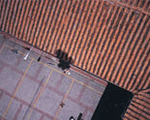
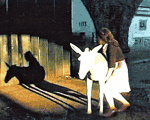 |
Freedom
Territory
British video art programme
Curator:Elena Zaitseva -contemporary art
curator, researcher of the Newest Tendencies
Department of the Tretyakov Gallery.
Art in our society is possibly the only
territory in which people’s yearning for
freedom is realized. In the global
performance society where TO BE is
transformed into CONSUME and PRETEND art
enables us to see the underlying meaning of
events while keeping aloof from ideology. A
major part here is played by art’s
appropriation of the spheres not originally
belonging to it such as mass media, public
space and everyday routine. This is where an
important humanitarian aspect of artistic
appropriation is revealed. It gives people
the much longed for “third way”, an
opportunity to break free from the system’s
stereotypes. Art working with appropriation
always makes people feel freer than before.
This is one of art’s most powerful magnets.
Due to it art remains one of the most
enchanting spheres of human activity despite
having rejected the function of aesthetic
pleasure.
Participants:
Beltran Obregon
Flávia Mueller Medeiros
Melanie Manchot
Noemi Mccomber
Doug Fishbone and others |
|
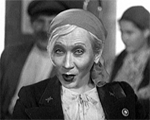 |
Feature Film
«Volga-Volga»
Vladislav Mamyshev-Monroe art project
Directors: Andrei Silvestrov, Pavel Labazov
Composer: Eduard Sivkov
Starring: Vladislav Mamyshev-Monroe
VIDEODOM production, Russia, 2006.
Running time: 70 min.
Andrei Silvestrov (film director, one of the
CINE PHANTOM club and festival founders)
presents VOLGA-VOLGA – the cult soviet
comedy of late 1930s directed by Grigory
Aleksandrov. This is a story of a gifted
village girl. Local bureaucrats try to
hinder her going to Moscow for a song
competition. The lead was played by Liubov
Orlova –the Russian Marlene Dietrich. This
is the strangest remake in the history of
cinema as the 1930s version has been
preserved completely, with the exception of
the leading actress. In this new version the
main character is played brilliantly by the
well-known Russian artist Vladislav Mamyshev-Monroe,
which gives the film an absolutely new
metaphysical sense. The world premiere of
the film took place at the 35th Rotterdam
International Film Festival as part of the
CINE FANTOM Day programme. |
Round table discussion
|
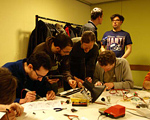 |
Leading media
artists, journalists, non-profit film
directors, alternative cinema producers and
animation-makers are invited to join the
round table discussion. The author(writ)y of
new media language and various art
strategies in working with them will be the
central topic of discussion. Oleg Kireev’s
“Media Activist Cook Book”, Shamanov’s “0
roubles” project and young art festival
“Stop! Who’s there?” (Darja Pyrkina) will be
presented along with other projects realized
in 2005-2006.
Moderator —
Nikolay Palazhchenko.
Media Activist Cook Book
Oleg Kireev
The history and practice of the tactical
media movement in Europe and the USA in
mid-1990s. The tactical media are means of
free copying and reproduction of
information, which became available with the
advent of computer technologies. The book
has chapters on radio, video, technological
collective actions in urban space and free
software. The author hopes for wide
propagation of tactical media practices in
Russia. |
Multimedia show
|

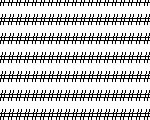
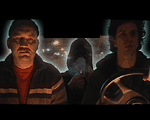 |
1. BigFinn British group
Gold In the Age of Copper Programme
2. NJ'ING by Oleg Kireev & DJ Osadchiy
News-jockeying is an artistic practice
characterized by NJ’s mixing not music
tracks or video images but news downloaded
form the Net through different news
agencies. As the result of switching from
different news groups pieces on hunger in
Africa are interchanged with pop industry
news. Thus the nj'ing practice becomes a
source of information on world’s condition
and creates a power metaphor in manipulating
the news. The most impressive results are
created by news coming at the exact moment
of their screening.
3. Pop-group "Doors" |
Competition programme >>>
Presentation programme >>>
|
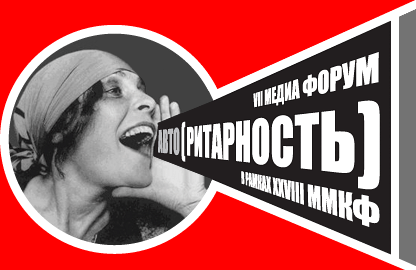
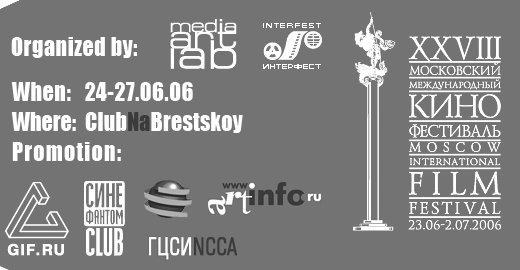
![]()